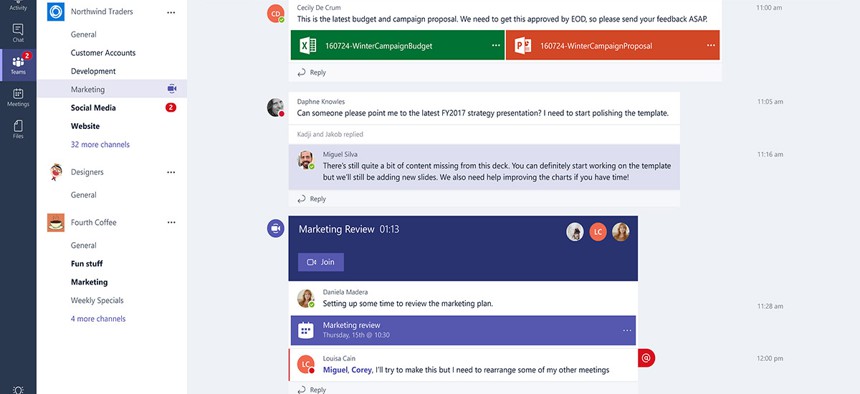sponsor content What's this?
GSA Pushes for a New Wave of Collaboration Tools for Agencies

Presented by
FedTech

The agency wants input on a range of tools for productivity and communication that can be both interoperable and secure.
The General Services Administration is exploring new kinds of email and collaboration tools for government agencies — and new ways of acquiring them, especially as more applications move to the cloud.
Specifically, the GSA said it is seeking feedback on “a new acquisition vehicle and corresponding business model for acquiring cloud email and collaboration tool IT services that can be leveraged by agencies planning to migrate to the cloud and agencies that have already deployed cloud solutions.”
The GSA issued a Request for Information (RFI) on the topic in mid-December seeking industry input. Respondents have until Jan. 20 to submit responses.
Overcoming Challenges with Current Collaboration Tools
In the commercial world, companies have increasingly been using cloud-based collaboration tools, including Google Hangouts, Slack, Skype for Business and others. New tools are being introduced at a rapid clip, including Facebook Workplace and Microsoft’s Teams.
According to the GSA, though, “too few” federal workers and teams are leveraging “modern collaboration tools like real-time shared documents, instant messaging, video conferencing, wiki-based sites for team projects” and other tools.
Further, there is a general lack of interoperable collaboration tools within agencies, and even more so between agencies and other government entities, the GSA says. “The situation is a hidden tax on productivity; it wastes time, creates missed opportunities, slows coordination and creativity, and can even pose a challenge for recruiting and retaining employees,” the RFI states.
The GSA acknowledges that the market for collaboration tools and infrastructure is “complex, fragmented, and evolving quickly” and that plans for deploying collaboration tools can quickly become out of date. Different agencies also have varying security requirements and acceptable levels of risk, which will affect the tools they use, the RFI notes. This can “lead to solutions that do not interoperate, duplicative acquisitions, and higher contract costs.”
Further, the GSA notes that “a lack of good collaboration tools and commonality between requirements can lead to an inconsistent security posture that is difficult to assess or audit. The current environment results in users performing workarounds that undermine security.”
The current approach to federal collaboration tools “is neither viable nor sustainable,” the GSA notes. The agency wants the government to move to a world in which a single email can reach all federal workers; workers from five different agencies can collaboratively edit a document together in real-time; instant messages can be sent between federal employees using mobile devices and applications from different vendors; and those messages can be delivered reliably and archived appropriately.
Seeking New Kinds of Collaboration Tools
The RFI breaks collaboration tools into two general categories.
On the one hand, there is asynchronous collaboration, in which communications can occur between people who are using the tools at different times and different places. These tools include email, calendaring, directory, file sync and share, enterprise content management, and secure external file sharing.
And then there is synchronous collaboration, in which users are in different locations but communicating with each other at the same time. These tools include instant messaging, presence, audio/video/web conferencing, group messaging and chat, softphone and collaborative document editing.
The RFI states that collaboration tools agencies use should not require training; should be interoperable; secure by design; support real-time editing and document sharing; work on different kinds of devices and across multiple veneers; support ad-hoc teams and sharing between departments and agencies with appropriate security permissions and controls; and lower operational and maintenance costs for agencies.
“Ideally, it should be as easy to collaborate in one room face-to-face as sitting in different rooms, different agencies, and organizations,” the GSA says.
This content is made possible by FedTech. The editorial staff of Nextgov was not involved in its preparation.


